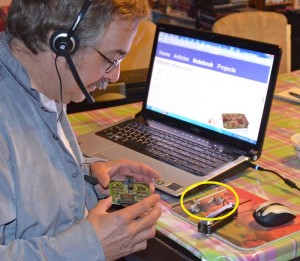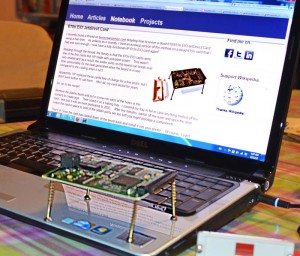Instructional Designer, Sahana Chattopadhyay shared her experience with on-line learning and connectivism in a presentation that was chock-full of quotable quotes. I can’t find them any where else, so here are some I’ve transcribed. Watch the full presentation at http://www.aurusnet.com/index.php?r=lecture/view&id=10177
(Twitter @sahana2802 Blog http://idreflections.blogspot.com/)
Sahana’s initial reactions were:
“The more I interacted, the more confident I became.”
“I’ve never felt so alive. I’m so much a learner. It was more like an adventure”
“I learned how being connected and being part of a network can help me learn from the experiences of others – stuff that I just could not do alone anymore. And I realized it was not important for me to know everything – I just didn’t have to – I just needed to reach out to my network, connect with them, and that would help me solve my challenges – a large number of them at least. If not we could always talk to each other and devise new ways of doing things.”
“Learning to be” is about full participation, about becoming a true contributing member of a community of practice, learning together and contributing to the growth of that knowledge.”
“Today in the globalized, distributed, but connected world that we live in, apprenticeship is being replaced by virtual communities of practice, interest groups and networks. Learning from the experience of others has never before been this easy, and never before so important and so critical.”
Moderator Viplav Baxi asked her to speak to her motivation in on-line learning. Sahana said she stumbled upon #lrnchat- and spent her time at first lurking to identify behaviour patterns, “some of the norms of the community which (are not) stated up front, sort of emerged.” She then began interacting one-on-one with other members of the #lrnchat group – this helped her become a “more intimate participant later”. She says that, in any community, you may move from being a lurker to the center and then to a lurker again depending on what the community is discussing at that time – and what’s important for you.”
Q: Was adapting to a new way of learning an easy thing, or was it difficult?
A: “Learning explicitly or implicitly leads to a behaviour change. If I learn something, my behaviour changes, and if that happens I don’t think it can be a very easy thing. Because at the end of the day I change the way I interact … What helped was seeing other people going through the same change.”
On the desirability of building learning networks & collaborative learning:
“No amount of teacher training schools will address all the problems that we have today unless teachers themselves also think that we have to learn and grow all the time.”
A reporter asked, “What are the challenges, if any, of managing people on an informal level thorough social media by just being a part of it?”
Sahana replied, “Rather than trying to manage, if we can inspire people or make people want to learn, or make people want to just converse, I think that is the first step. If people start to talk, and if similarly passionate and similarly interested people get together and talk, learning is bound to happen.”
Edgex2012 schedule at http://www.edgex.in/schedule.html
Other recordings and Live view while in session: http://www.aurusnet.com/index.php?r=course/view&id=357








